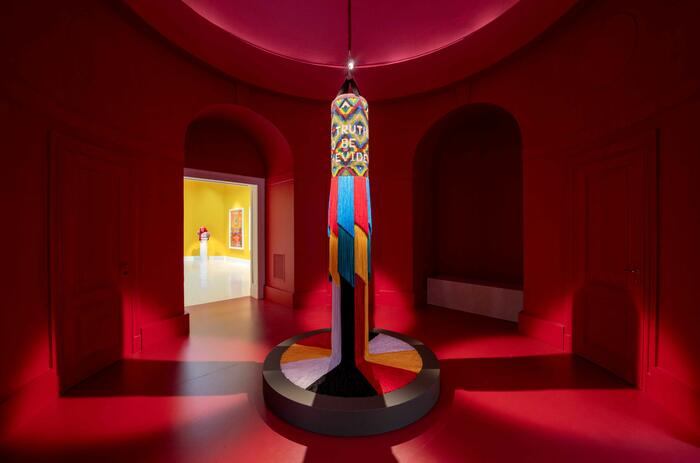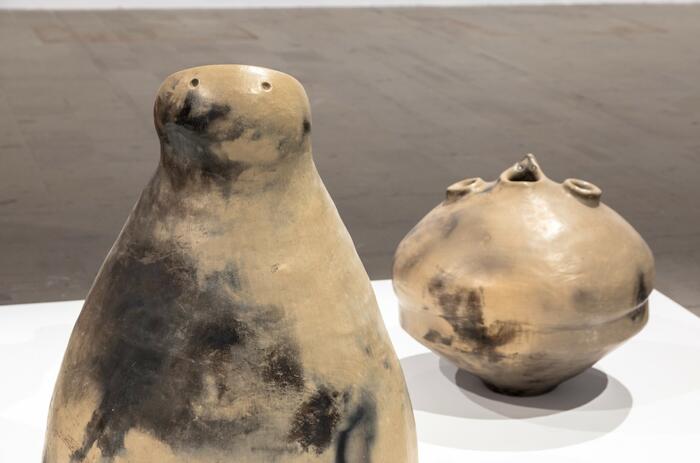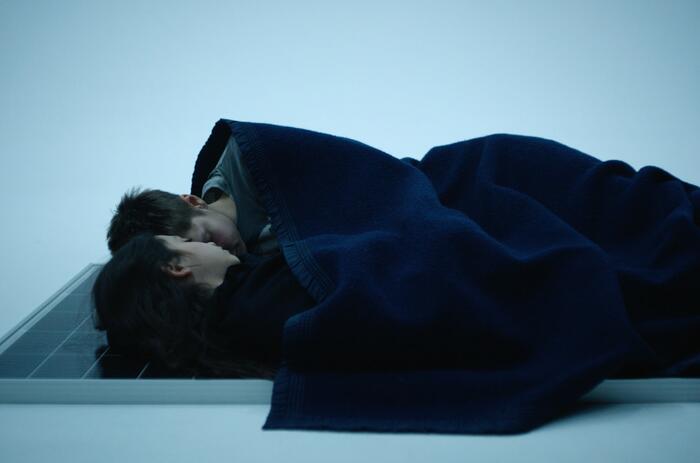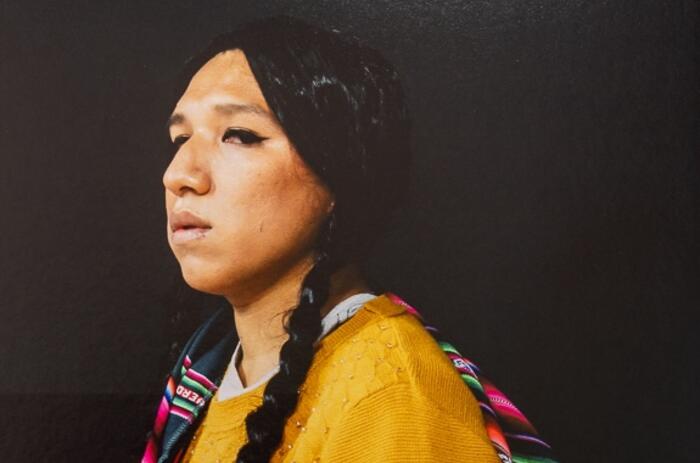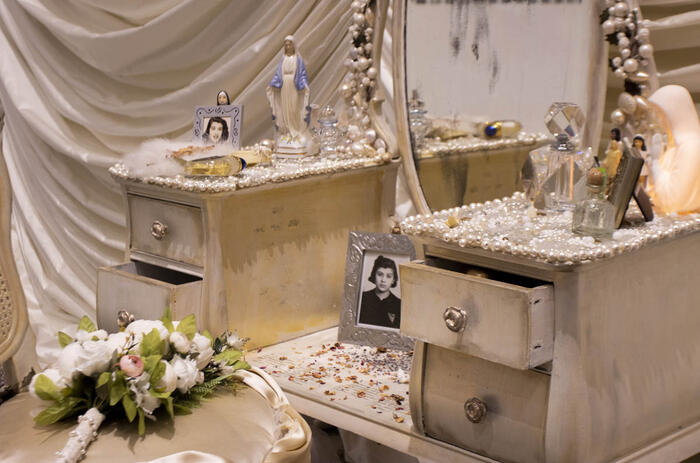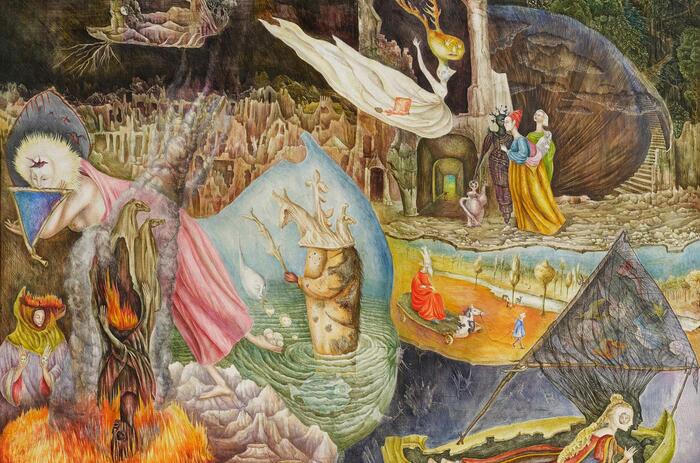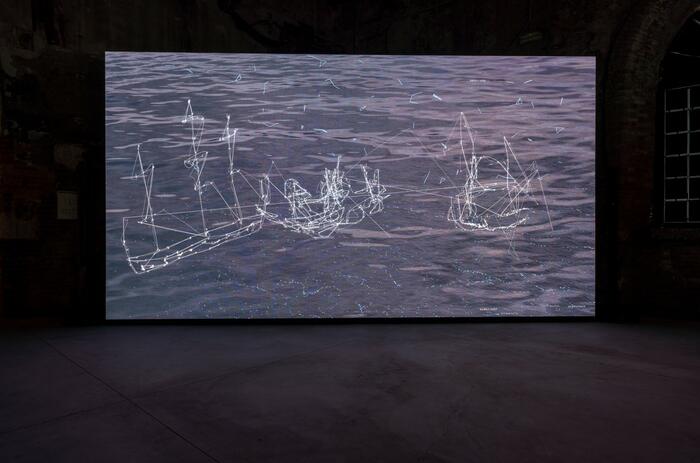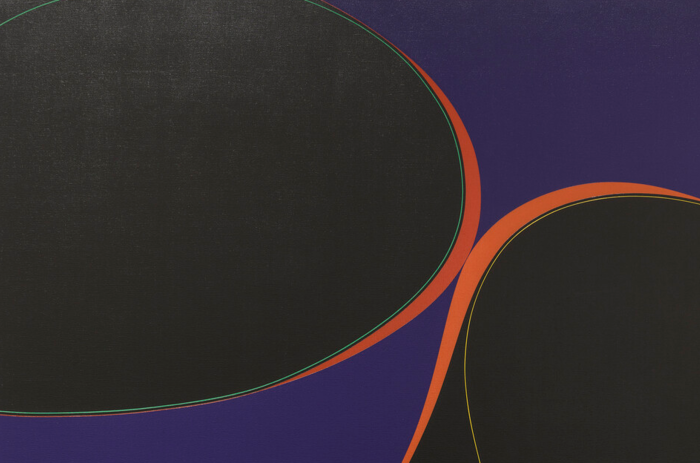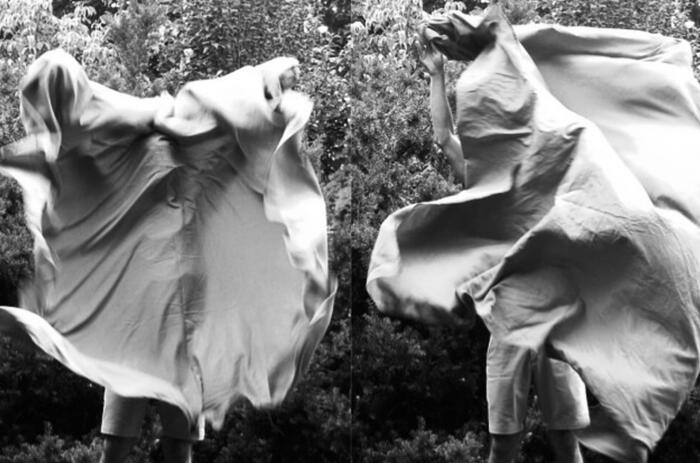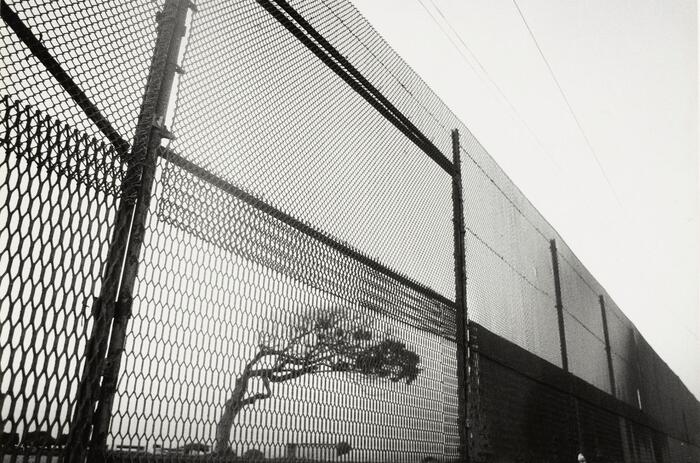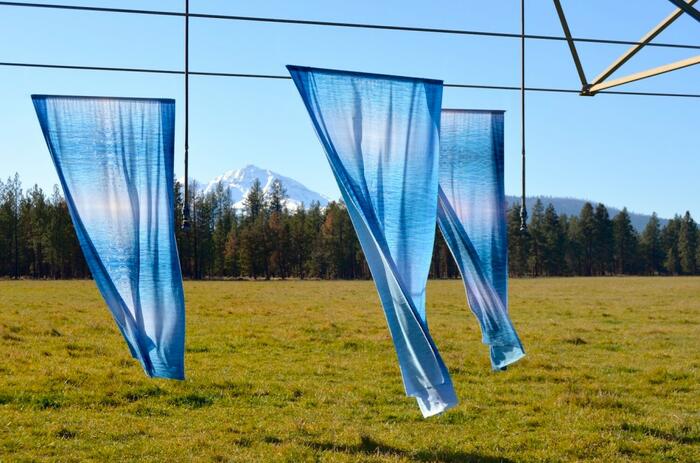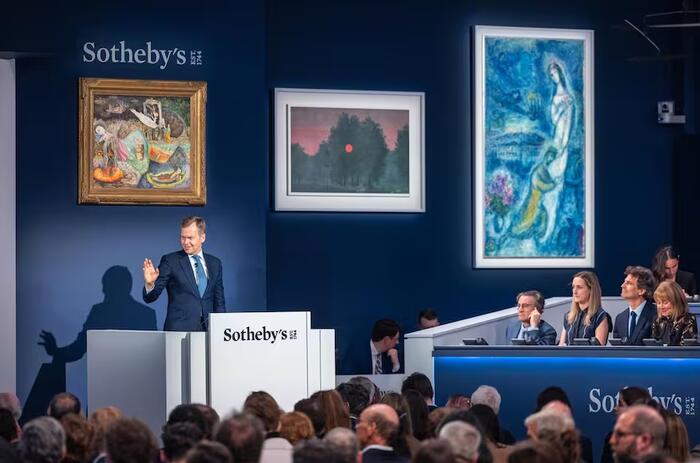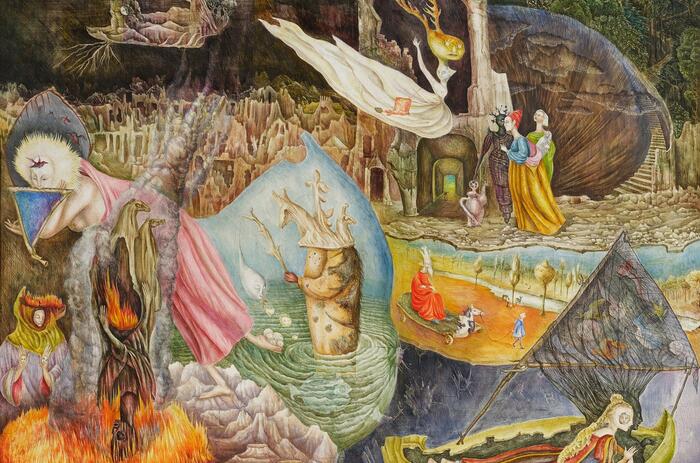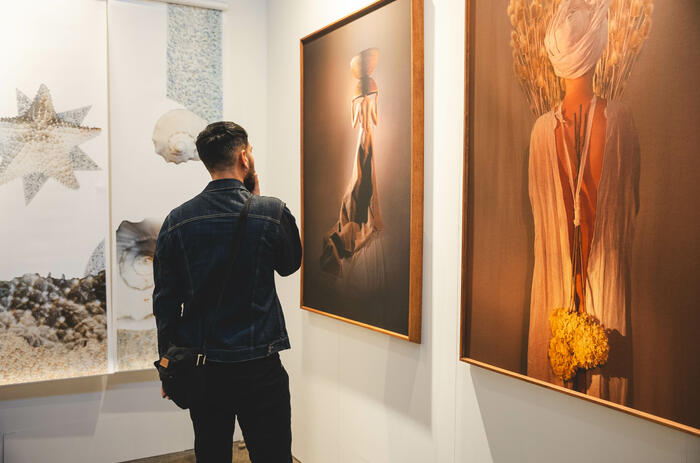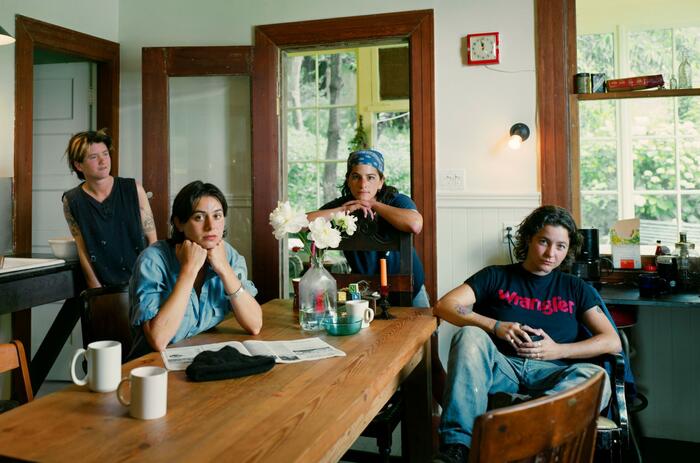FRIEZE NEW YORK 2024 – A VIEW FROM THE FLOOR
With the opening of Frieze NY last Wednesday, the NY Contemporary sales season has kicked off (if it ever truly stops!). From now until mid-May, it's a whirlwind of fairs and gallery openings, culminating in the grand auctions. May is a crucial time for the US art market calendar and the results will have global repercussion for the remainder of the year.
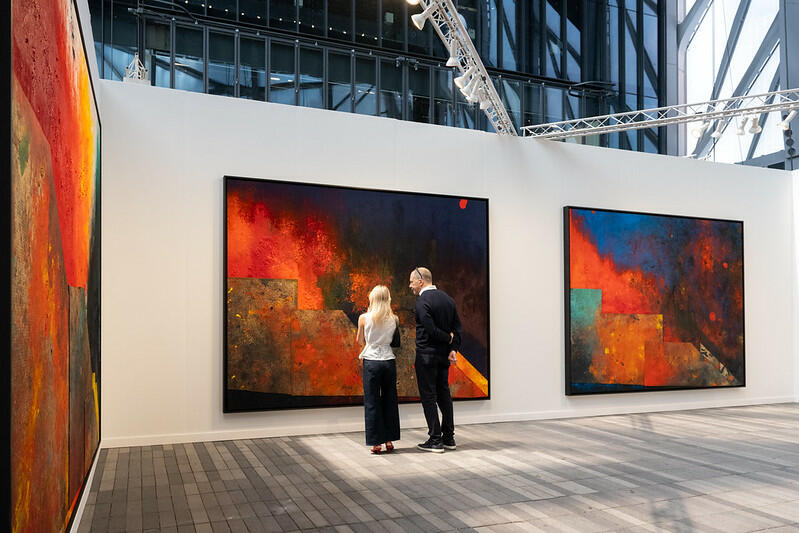
This edition marks the fourth year at The Shed, the futuristic edifice in midtown—a stark departure from the tents of Randall's Island. Despite critiques of the venue's limitations, it offers distinct advantages. While it may feel a bit cramped, its central location and limited space foster a manageable number of galleries. Another aspect I like about Frieze being at The Shed is its proximity to the many Chelsea galleries. This convenient location, made even more enjoyable by strolling the High Line, allows for easy access to a plethora of new and enticing shows, which this year sees the addition of two other fairs in the area: NADA and 1-54. I found the latter particularly intriguing, boasting a strong selection of African and African diaspora artists.
Returning to Frieze, it's important to highlight that more than half of the fair's 68 exhibitors have permanent galleries in the city, using the fair as a temporary local space with fabulous foot traffic. The art on view offered a diverse mix of styles, predominantly paintings, with a blend of figuration, abstraction, and the now-ubiquitous figurative abstraction, featuring both new and established names. While many galleries chose to showcase a selection of artists, others opted for solo presentations, which, from an aesthetic standpoint, were the most eye-catching. Notably, Gagosian's booth stood out with four new monumental abstract works by Sterling Ruby, exuding immense power. Situated in a prime location with ample wall space and bathed in natural light, these works commanded attention. Priced at $550,000 each, two of them sold during the preview day and by the end of the fair all four were placed with important collectors. Galleries coming from abroad tend to be more cautious due to higher costs such as expensive shipping and accommodation. Consequently, they often opt not to risk solo shows but instead exhibit various artists—a safer bet in challenging economic climates. Additionally, in this edition some dealers have collaborated to share space and costs, indicating how they strive to strike a balance between the high expenses of participating in a fair and the advantages in terms of sales and networking opportunities it offers. In this regard, Frieze NY serves as an excellent platform not only for connecting with collectors but also, crucially, for showcasing artists to curators, many of whom are based in the city, making it incredibly convenient for them to attend the fair. Furthermore, the fair garners significant international attention, as evidenced by the attendance of 135 local and institutional museum groups this year. In total the fair received near 25,000 visitors from 66 countries during its five-day run.
The fair floor structure also mirrors the art ecosystem, albeit in an inverted pyramid. At ground level, the mega and globally recognized galleries bask in a soft, natural filtered light, while as you move up, the names become less globally prominent but still significant.
Regarding price levels, they ranged from $6,500 for works by Holly Hendry at Stephen Friedman Gallery to the $2 million for pieces by Robert Rauschenberg presented by Thaddeus Ropac, encompassing a broad spectrum in between. Notably, the highest reported price was achieved by White Cube for a poignant work by Colombian artist Doris Salcedo titled "Disremembered XIV”.
The fair boasted a significant presence of Latin American galleries., ranging from the well-established Mexican Kurimanzutto to the burgeoning Guatemala-based Proyectos Ultravioleta. In the Focus section, dedicated to galleries under 12 years old, each showcasing a solo presentation, Brazilian gallery "Central Galeria" featured a captivating solo show by Brazilian Indigenous painter Carmézia Emiliano with paintings ranging from $18,000-$32,000. They declared to have sold seven paintings with several more on reserve. Although the artist is not represented in the Venice Biennale, she recently concluded a solo exhibition at the Museu de Arte de São Paulo (MASP), where Adriano Pedrosa—this year's Biennale curator—has served as artistic director since 2014. This observation is particularly noteworthy, as many galleries at Frieze are concurrently representing artists exhibiting in Venice. Other notable works at the fair include those by Latin American artists, many of whom are women. Artists such as Sonia Gomes and Marina Perez Simão (Mendes Wood), Beatriz Milhazes and Valeska Soares (Fortes D’Aloia & Gabriel), and Vivian Suter (Proyectos Ultravioleta) showcased captivating pieces. Ortuzar Projects, while a New York gallery, boasts a strong contingent of Latinx artists and artists from the Spanish-speaking world. Their booth featured textile works by the late Paraguayan artist Feliciano Centurión, whose collaged blankets—referred to as "frazadas"—feature embroidered personal texts and found items related to his AIDS diagnosis, tapping into a growing interest among curators, dealers, and collectors in textile-based artists deserving of career re-evaluations.
The Venice effect permeates the fair at all levels. This is evident in Alex Katz's striking solo exhibition with Gladstone, featuring paintings from the same new series currently on view at Fondazione Giorgio Cini in Venice. Additionally, Perrotin's sell-out display of paintings and sculptures by Lee Bae, a South Korean artist known for his involvement in the Dansaekhwa ('monochrome painting') movement, further highlights this influence, with Lee currently having a solo exhibition at an official collateral event at the Venice Biennale.
Frieze week extends beyond the fair itself, encompassing numerous other fairs and gallery openings, all capitalizing on the influx of collectors, curators, and art enthusiasts in town. This week, however, there seemed to be fewer international collectors. It's possible they might arrive next week or, more likely, for the major auction sales. This raises an interesting point about the purpose of fairs like Frieze—isn't the idea to have editions in various regions to bring the art closer to the locals, rather than requiring collectors and professionals to traverse the globe for the never-ending succession of events?
According to a study by Clare McAndrew and Independent, in 2019 the United States represented 44% of the global art market. Within the US, New York dominated with a remarkable 90% share of art sales, signifying that the city contributes around 40% to the worldwide art trade. Additionally, the study highlighted that New York is home to some of the largest auction houses and dealer businesses globally, while also serving as the residence of many of the world’s top art collectors, with an estimated 1,500 individuals collecting at the very highest level residing in the city. These findings underscore why so many fairs are drawn to New York and why numerous galleries choose to establish a presence in the city. Hauser and Wirth’s president, Marc Payot, emphasized Frieze New York's significance, stating “once again, Frieze New York confirms New York is the center of the global art market”.
Amidst widespread speculation about the market's trajectory, New York Frieze week heralded a promising start, marked by good sales reports across many galleries with several reporting sold out booths. However, it's crucial to recognize that these figures stem from self-reported dealer data, providing only a glimpse into the larger landscape. The true pulse of the market will only be revealed during the imminent major auctions in a mere fortnight, promising a more nuanced and comprehensive assessment of its current state.

